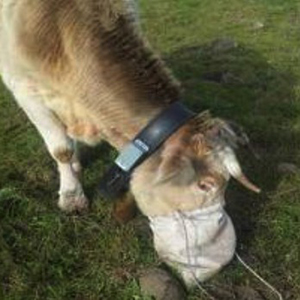Kernel density estimation analyses based on a low power-global positioning system for monitoring environmental issues of grazing cattle

All claims expressed in this article are solely those of the authors and do not necessarily represent those of their affiliated organizations, or those of the publisher, the editors and the reviewers. Any product that may be evaluated in this article or claim that may be made by its manufacturer is not guaranteed or endorsed by the publisher.
Authors
The use of wearable sensors that record animal activity in intensive livestock systems has become more and more frequent for both early detection of diseases and improving production quality. Their application may also be significant in extensive livestock systems, with infrequent farmer-to-animal contact. The present study aimed to prove the feasibility of a novel automatic system for locating and tracking cows in extensive livestock systems based on space-time data provided by a low-power global positioning system (LP-GPS). The information was used to study the pasture exploitation by the herd for modelling the environmental impacts of extensive livestock systems through geographical information systems (GIS). A customised device, placed within a rectangular PVC case compatible with the collar usually worn by animals, was equipped with an LP-GPS omnidirectional system, an integrated SigFox communication system, and a power supply. The experimental trial was conducted in an existing semi-natural pasture characterised by good pasture allowance and cultivated grazing areas. Ten cows were embedded with LP-GPS collars, and the data, i.e., geographical coordinates and the time intervals related to each cow detection, were recorded every 20 minutes. Data were collected through a specifically developed AppWeb to be further imported and elaborated by using a GIS software tool. In the GIS environment, the daily distances travelled by each cow were linked with heatmaps obtained by applying Kernel density estimation models from the points obtained from the LP-GPS collars. The study results made it possible to obtain information on some relevant aspects of livestock’s environmental issues. In detail, it was possible to acquire information on herd behaviour related to the use of the pasture, e.g., the area of the pasture most frequently used during the day, individual use of the pasture, and possible animal interactions. These results represent the first step towards further insights and research activities because monitoring of animal locations could reduce several environmental issues such as soil degradation and greenhouse emissions.
How to Cite

This work is licensed under a Creative Commons Attribution-NonCommercial 4.0 International License.














